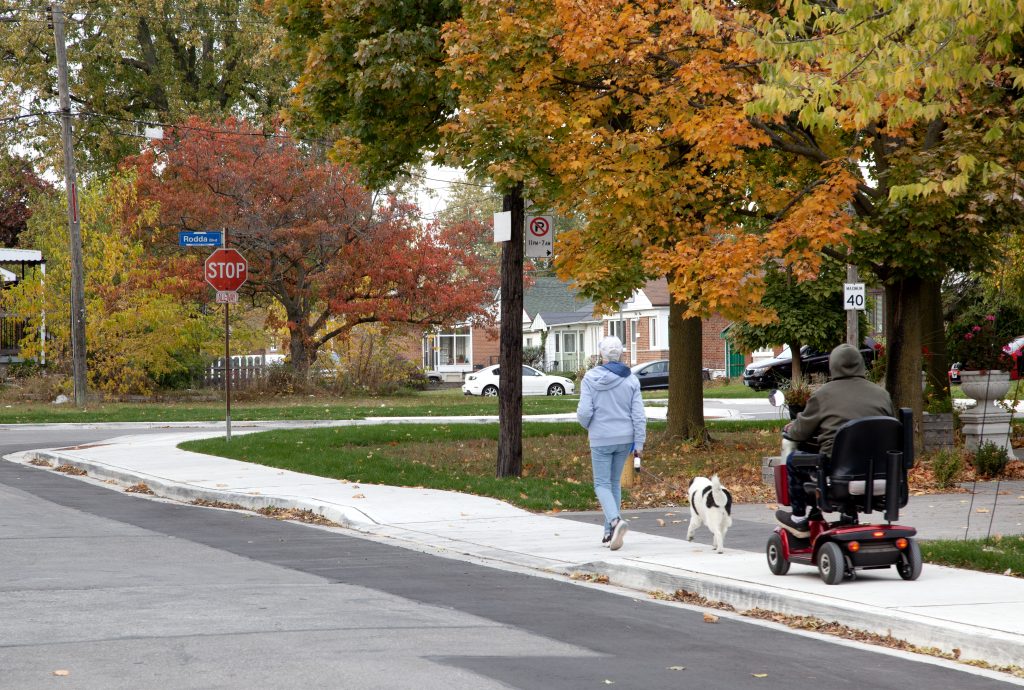

Sidewalks are a fundamental requirement for an accessible city. The provision of sidewalks helps to remove barriers to access for vulnerable populations including children, seniors and persons with disabilities. Sidewalks offer a protected, dedicated space for all pedestrians, which is especially important for vulnerable pedestrians and when visibility is poor. In February 2016, the City’s Disability, Access and Inclusion Advisory Committee provided a unanimous endorsement of the role sidewalks play in reducing barriers to access and the need to add them whenever there are major construction opportunities.
The City has a number of adopted policies that support the expansion of the sidewalk network to all roads. In 2002, City Council adopted the Missing Sidewalk Installation Policy and the Toronto Pedestrian Charter. The Charter has six principles: accessibility, equity, health and well-being, environmental sustainability, personal and community safety, and community cohesion and vitality. Later in 2009, City Council adopted the Toronto Walking Strategy and its three Guiding Principles: universal accessibility, safety, and design excellence. Similar themes are reflected in the City’s Official Plan (2004), Seniors Strategy (2013), Healthy Streets (2014), Road Safety Plan (2016), and Vision Zero 2.0 Road Safety Plan Update (2019), among others.
Transportation Services has the authority to install sidewalks on arterial and collector roads in accordance with the Missing Sidewalk Installation Policy. An update to the policy, adopted by Council in July 2019, delegated authority to Transportation Services to install sidewalks to local roads as part of road reconstruction, to accommodate a request for a person with a disability, and in cases where a Community Council has approved a new traffic-calming measure after the policy was adopted. As part of the 2019 update to the policy, Council requested that sidewalk proposals not otherwise delegated to the General Manager, Transportation Services, or those requested by a Member of Council, be reported on an annual basis to the Infrastructure and Environment Committee for recommendation to City Council.
Transportation Services delivers most new sidewalks through the Missing Sidewalk Installation Program, which reviews opportunities to install sidewalks on all roadways through bundling with state-of-good-repair roadway work, as well as standalone delivery.
Further, the construction and repair of sidewalks is guided by the 2012 Provincial Accessibility for Ontarians with Disabilities Act (AODA). While the AODA directs that sidewalks be at least 1.5 m wide, the City of Toronto standard is that all new sidewalks should aim to be 2.1 m wide. The City’s design standard can be found on the Standards for Designing and Constructing City Infrastructure webpage.